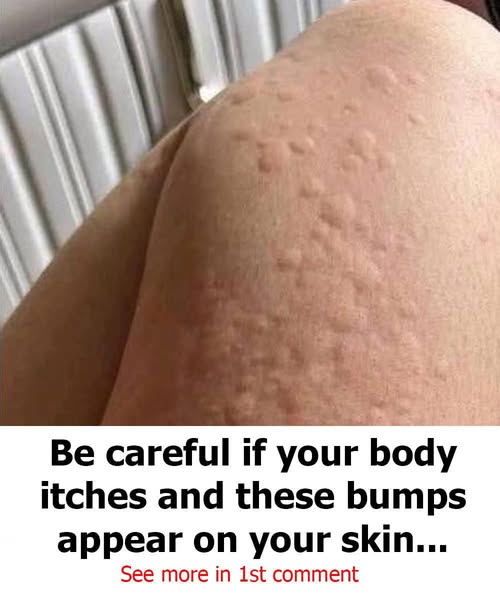Why do hives appear on the skin? These are the surprising factors you might not know about.
Urticaria, more commonly known as hives, is a frequent skin condition that affects people of all ages and backgrounds. It is characterized by raised, red, and itchy welts that can appear suddenly and often change in both size and location. These welts may show up on the face, arms, legs, or trunk, sometimes covering large areas of the body. To those experiencing it for the first time, the appearance of urticaria can be alarming, yet in many cases the welts resolve on their own within hours or days. The condition arises from the release of histamine and other chemicals by mast cells, which are immune cells found in the skin. When triggered, these cells cause tiny blood vessels, known as capillaries, to leak fluid. This leakage produces the swelling and itching that define the rash.
A key feature of urticaria is its transient nature. Unlike other skin rashes that linger for weeks, the welts from urticaria usually fade within twenty four hours without leaving scars or marks behind. However, new welts can form as the old ones resolve, leading to a frustrating cycle for those affected. The itching, also referred to as pruritus, can be extremely intense, interfering with daily activities, concentration, and even sleep. In some cases, urticaria is accompanied by angioedema, a deeper form of swelling that affects areas such as the eyelids, lips, hands, feet, or even the throat. While most episodes of urticaria are harmless, angioedema that impairs breathing is considered a medical emergency and requires immediate attention.
Doctors classify urticaria based on how long it lasts. Acute urticaria is the most common form and resolves within six weeks. It is usually linked to an identifiable cause, such as an allergic reaction, a recent infection, or a new medication. Chronic urticaria, by contrast, persists for more than six weeks and can last for months or even years. In many chronic cases, no clear trigger can be identified, which adds to the frustration of patients and clinicians. Research suggests that autoimmune mechanisms are often involved, meaning the immune system mistakenly activates the body’s own mast cells, leading to repeated outbreaks. There is also a third category, called inducible urticaria, which occurs when physical stimuli act as triggers. Examples include cold exposure, heat, direct pressure on the skin, vibration, or even sunlight.
The triggers for acute urticaria are wide ranging. Allergic reactions to foods such as nuts, shellfish, or eggs are well known causes. Certain drugs, including antibiotics, pain relievers, or blood pressure medications, may also provoke hives. Insect stings and bites are another common source of acute episodes. Viral and bacterial infections frequently trigger urticaria in children, while stress and emotional strain can make outbreaks worse in both children and adults. Chronic urticaria is more complex. In many cases, despite extensive testing, no single allergen or external factor is found. Instead, the body’s immune system appears to drive the repeated release of histamine, keeping the condition active.
Diagnosis of urticaria is primarily clinical. Doctors rely on a detailed history of the patient’s symptoms, possible exposures, and any associated factors. In most cases, no elaborate laboratory work is required. If the urticaria becomes chronic or severe, additional blood tests and allergy evaluations may be recommended to rule out other conditions.
Treatment centers on controlling symptoms and improving quality of life. Antihistamines are the mainstay therapy, as they block the effects of histamine and reduce both itching and swelling. These medications are generally safe and effective, though higher or repeated doses may be required in chronic cases. For severe outbreaks, short courses of corticosteroids may be prescribed to reduce inflammation, though they are not intended for long term use. Just as important is identifying and avoiding known triggers, which can greatly reduce the frequency of recurrences.
Although urticaria is usually harmless, its impact on comfort, daily life, and mental well being should not be underestimated. With the right management, most people can keep the condition under control, and ongoing research continues to shed light on the underlying mechanisms. For patients, the key is recognizing the condition early, seeking medical advice when necessary, and understanding that relief is possible even when the triggers remain unclear.


![[VERY SAD] ‘The Price is Right’ long-time members SAYS GOODBYE and parted ways, host Drew Carey having an EMOTIONAL MOMENT](https://news-saga.com/wp-content/uploads/2025/06/502681850_122194619828105426_5107879455484275612_n.jpg)


